Piolets d'Or Announces the "Significant Ascents" of 2023
This list of 68 climbs is effectively a "long list" used to select nominees of the prestigious alpine award.

I was in the broadcast control room at the Mumbai Marathon in January 2017, overseeing the full technical rehearsal, when I noticed the South African graphics operators struggling with two names on the Indian Women’s Top 10 list. The names didn’t sound Indian, they said, and were sure there had been a mistake. I looked at the list and couldn’t contain my smile. Though the names were Tibetan in origin, they belonged to two young Indian athletes from Ladakh, Jigmet Dolma and Tseten Dolkar. I had been waiting for this day since 2014 when Nepalese ultrarunner Mira Rai burst onto the international skyrunning scene and I knew that it was just a matter of time before the mountain folk of India would do the same. The Ladakhis announced their arrival on the distance running stage with Jigmet securing a podium finish in Mumbai last year.
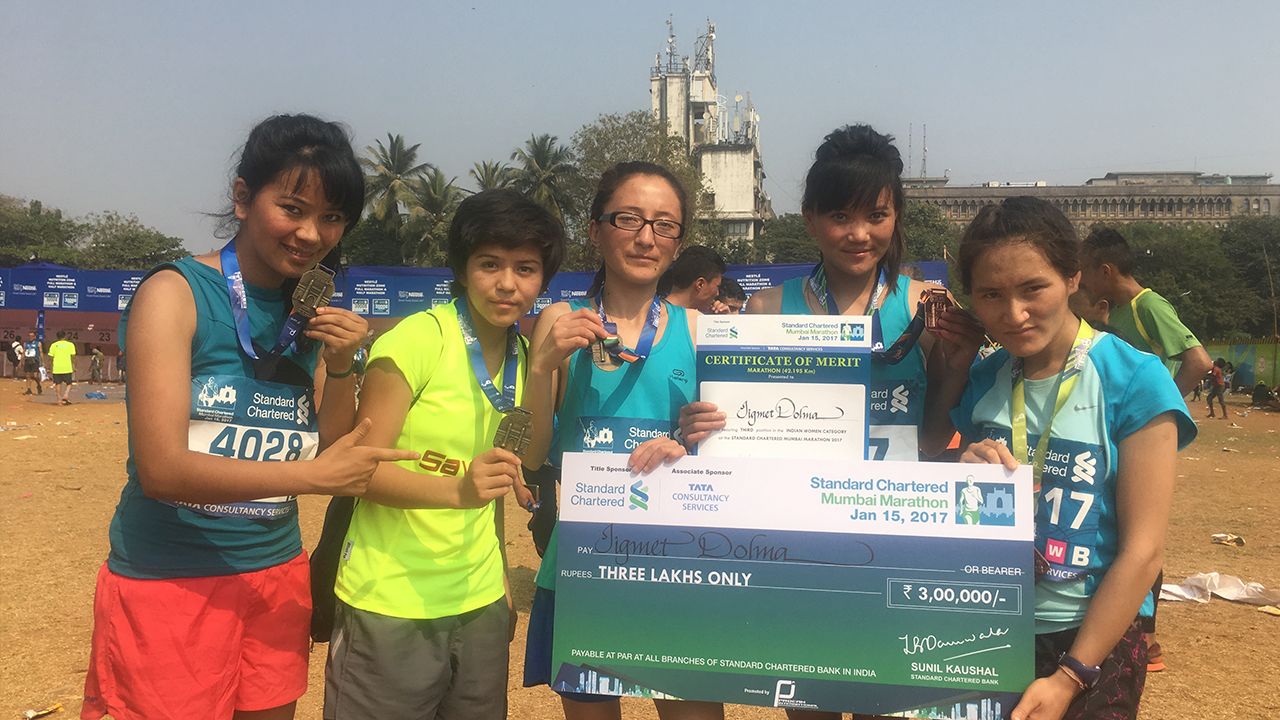
The youngest of three daughters born to Tsering Dolma, a subsistence farmer from Igoo village near Leh, Jigmet showed signs of athletic brilliance from a young age. When she wasn’t helping her parents in the fields or selling vegetables in the market, she took part in school athletics competitions, winning most of them. In 2012, she got an opportunity to run a half marathon for the first time, at the inaugural edition of the Ladakh Marathon, a landmark event in Ladakh’s sporting history. Subsequently, the promoters of the event, Rimo Expeditions, began taking the top Ladakhi runners down to Delhi and Mumbai to participate in other marathons and get professional training. By 2017, Jigmet had secured podium finishes at marathons across the country and stacked up career earnings of more than five lakh rupees, a huge amount for the daughter of a poor farmer, who used to get laughed at for running around aimlessly. When she returned to Leh from Mumbai last year, all her family and friends came to receive her at the airport. She shares half her winnings with her family and even helped her older sisters set up a roadside restaurant in Karu, on the Leh Manali highway. This is a small example of how the power of sport could be harnessed for social transformation among remote mountain communities.
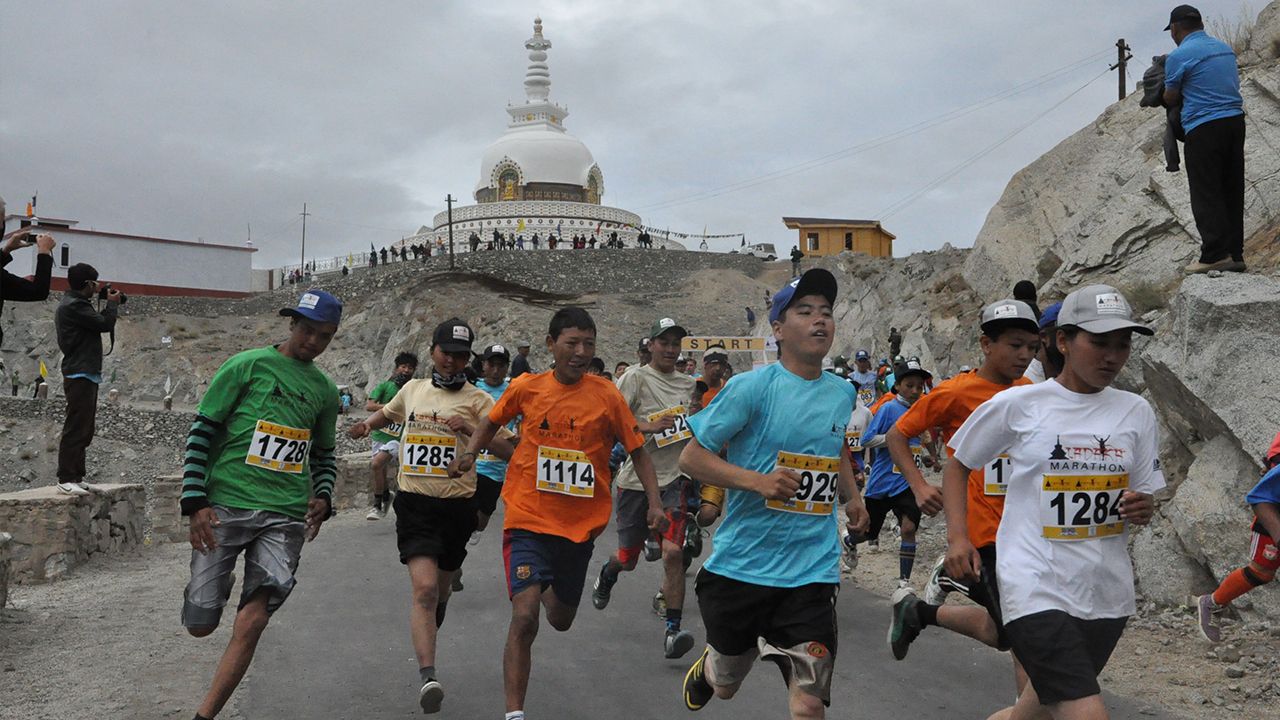
The founder of Ladakh Marathon, Chewang Motup Goba, is an unassuming gamechanger. An experienced mountaineer himself, Motup is a man who has always dreamed big. In 1983, at the age of 18, he attempted a solo ascent of Everest along the sidelines of an IMF expedition. Though he didn't make it to the summit, this audacious attempt was representative of the die hard spirit of the Ladakhis. By the turn of the century however, all that Motup saw among the youth of Ladakh was a spirit of rebellion and decadence. This was most evident in the long winter months, when the region remains cut off from the rest of the world. Youngsters had taken to smoking, gambling, playing snooker and largely spending their time indoors in dingy spaces. The only outdoor sporting activity available during the brutal Trans-Himalayan winter was a primitive form of ice hockey that the locals played on frozen lakes, wearing old cricket pads. Through a friend in Canada, Motup contacted the National Hockey League Players Association, a body that promotes ice hockey around the world. The NHLPA sent 50 professional ice hockey kits to Ladakh and triggered the now famous Ladakh ice hockey story. Motup says, “My idea in life is that if someone is good at sports, he can survive in any condition. Most of our youth are not exposed to good education and cannot compete with people from other parts of the country, but being born at this altitude, with our god gifted big lungs and hearts, we have a natural potential to be good at endurance sports.”
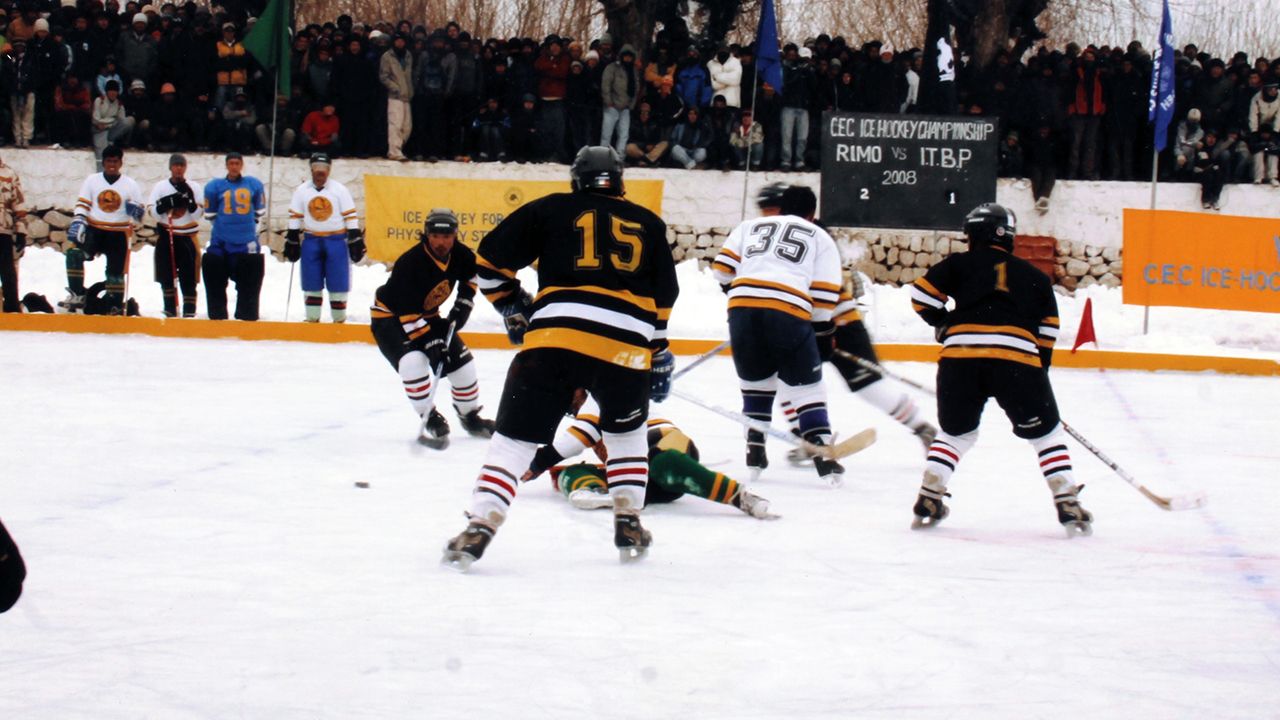
In August 2010, Ladakh was devastated by a flash flood that caused unprecedented damage to life, property and public morale. To inspire the youth and send a strong message to the world that Ladakh was up and running after the disaster, Motup decided to start the Ladakh Marathon and Khardung La Challenge Ultra. The idea of organising an international running event in Ladakh however, had been brewing in Motup’s mind for a long time.
In 1987, the Sports Authority of India launched a programme called the Special Area Games to scout for talent among remote tribal, rural and coastal communities for achieving excellence in sports. Rigzen Angmo, then a teenager from Skarbuchan village, was picked up under this scheme to run middle and long distance races. By the mid 90’s Angmo had won the Rath Marathon in Delhi and continued securing podium finishes across Asia with victories in Bangkok, Kuala Lampur and Kathmandu. She was counted among the top female marathon athletes in India at the time. Angmo’s misfortune was being a Ladakhi athlete in the state of Jammu and Kashmir. The Kashmiri dominated state sports federation never selected her to run for the state team and therefore she never had the opportunity to represent India at international events like the Olympics. When the Special Area Games were scrapped, Angmo was lucky to find herself a job with the Central Reserve Police Force (CRPF) where she currently serves as a Lieutenant Colonel. The irony is that while Rigzen Angmo’s athletic celebrity vanished into oblivion, it was her sporting talent that eventually provided her a livelihood.
This was the precedent Motup had in mind when he instituted the Ladakh Marathon. He knew that in order for Ladakhis to cut through the red tape of India’s sports federations, he had to put systems in place that would ensure that talent like Angmo didn’t fade into obscurity. Which is why he made the effort to engage Hugh Jones, Secretary of the Association of International Marathons and Distance Races (AIMS) to personally measure and certify the courses for both the marathon and the ultra. In doing so, Motup became one of the few private promoters in India to get an AIMS certification for his event. The certification brings the race into the fold of the timing-based system of qualification to run international marathons. Future athletes from Ladakh will thus be able to bypass the selection politics of sports federations to some extent.
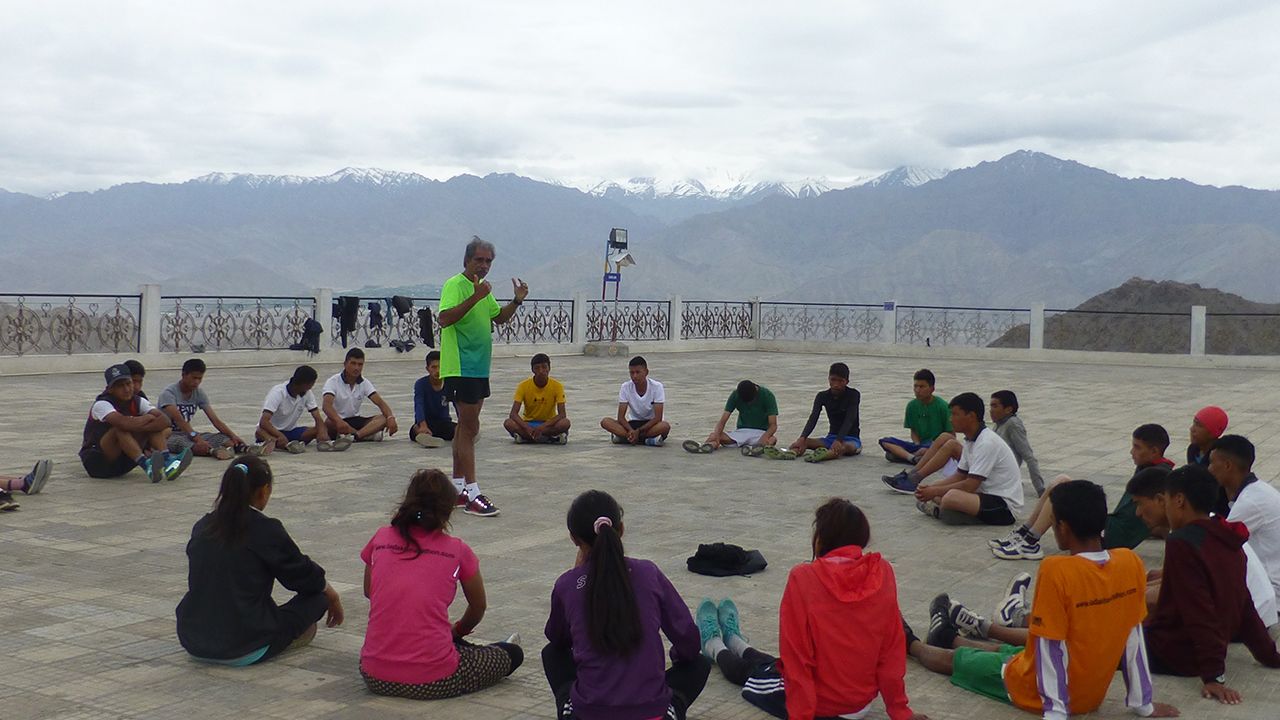
The icing on the cake is that both the Ladakh Marathon (3500m) and Khardung La Challenge Ultra (5370m), are currently the highest altitude AIMS certified distance races on earth, making them very attractive for international runners. The 2017 edition saw a participation of 6000 people from more than 35 countries, across 4 race categories. The Khardung La Challenge was capped at 150 participants and had 78 finishers, a big jump from the previous year. The gruelling 72k race across the world’s highest, all-weather vehicle accessible pass, has so far been dominated by young Ladakhi athletes from the Ladakh Scouts, a decorated infantry regiment of the Indian Army that specialises in high altitude mountain warfare.
In 2017, Shabbir Hussain of the Scouts broke his own course record finishing the 72k race in 6 hours and 23 minutes. Hussain and his compatriots Rigzen Norbu, Tsering Stobgais and Tsewang Tokdan have won all the previous editions among them. Most had never heard of an ultramarathon before they ran the Khardung La Challenge, happening in their own backyard. The marathon has become a successful recruiting ground for the Ladakh Scouts who have enlisted a number of local athletes in the recent past, based on their performance at the event. This prospect of job security has helped the event gain popularity within the Ladakhi community, that has now begun supporting the idea of sport as a means to livelihood. Seeing the potential of their athletes at high altitude ultras, the Scouts are now taking a keen interest in training them to compete internationally. And the best place for them to do so, is another world-class high altitude race that happens in Ladakh. One that has developed a cult following as ‘the cruellest foot race on earth’, known simply as La Ultra – The High.
Founded by the maverick Dr. Rajat Chauhan, who calls himself a ‘student of pain and running’, La Ultra is the holy grail of skyrunning in the Indian Himalayas. Writing for the Mint newspaper in August 2017, Dr. Chauhan says, “The flagship category at La Ultra is 333km that has to be covered in 72 hours, then there is 222km and 111km to be covered in 48 and 20 hours, respectively. As much as people get carried away by these numbers, it’s not the distance that is the deal here. It’s the conditions—altitude, the extreme temperature variations and weather—that participants are expected to run in. At the highest points, the oxygen level is as low as 60% of what we breathe at the plains. The temperatures can vary from 40°C to -10°C within a matter of hours. There could be a snowstorm followed by a dust storm. In this run, you can have frost-bite while having a heat-stroke.”
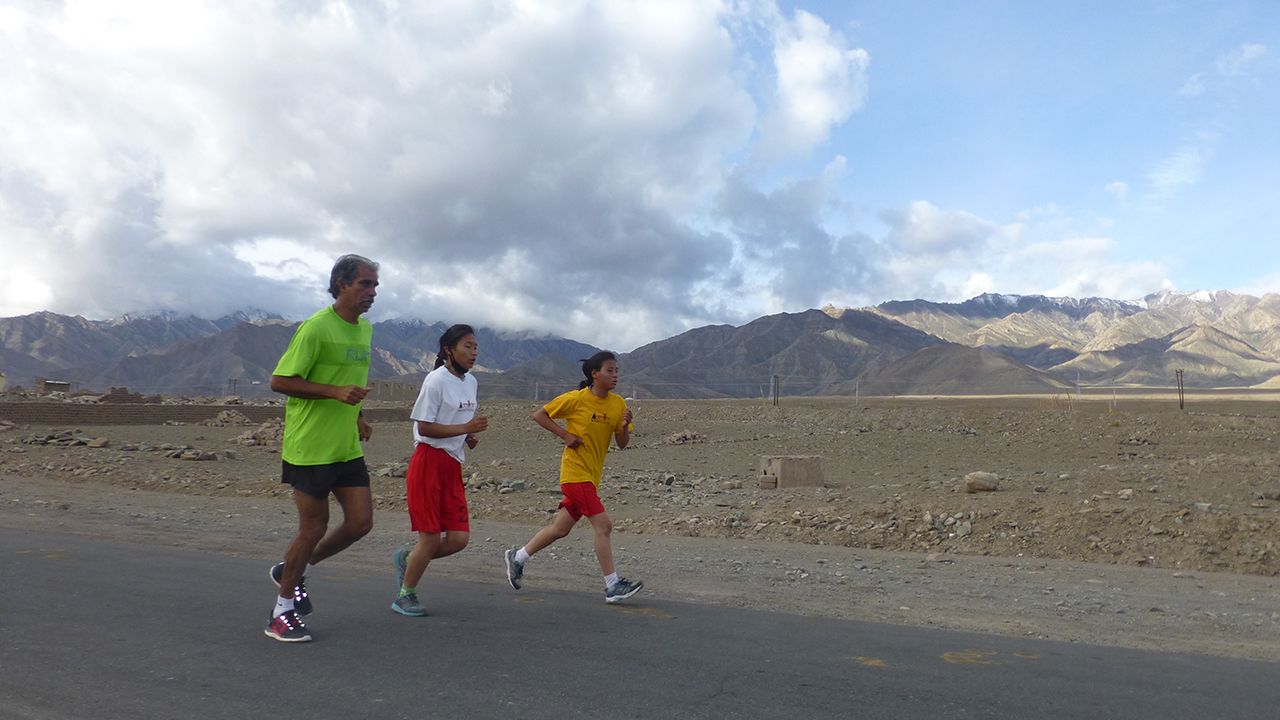
Started in 2010, La Ultra was largely perceived as a race for international runners with people from 22 countries having run so far. But the 8th edition in 2017, signalled a turning point when it saw a major increase in participation among Indians, with close to 35 of them running across the 3 categories. It came as no surprise then to see the same boys from Ladakh Scouts, Stobgais, Norbu and Hussain smash the course record in the 111k category by more than 2 hours. The Ladakhis have begun taking control of their turf. With the right training and infrastructure in place, these athletes have the potential to do extremely well on the international skyrunning circuit.
Empirical evidence of this long held theory arrived in February 2018 when Dr. Aashish Contractor, Head of Department Rehab Medicine and Sports Medicene at Sir H. N. Reliance Foundation Hospital and Research Centre, Mumbai, conducted some tests on Ladakhi athletes. In a Facebook post he wrote, “Tested the VO2 Max of talented runners from Ladakh. Happy to report that they have world class values of more than 70 ml/kg/min of oxygen carrying capacity. This is the gold standard marker of their cardiorespiratory capacity, an indicator of success at endurance events like the marathon. With the right training and support these runners should make us proud at international sporting events. And who knows, maybe this will unlock a pool of talent, just as was done in East Africa (Kenya and Ethiopia), a few decades ago.”
Savio D’Souza, a former national marathon champion and popular running coach in Mumbai, has taken some of these Ladakhi athletes under his wing. He believes they have the right combination of ambition, discipline and physical capacity to make it to the top. He says, “The Sports Authority of India talks of working at the grassroots, well, this is where the grassroots is, in places like Ladakh. They need to take charge of these athletes and train them professionally.”
The Indian authorities need not look far for further evidence of Ladakhi potential. A glance across the Himalayas into China would be an eye opener. In 2017, the breakout stars at the 13th National Games held in Tanjin, in north east China were Topgyal, a marathon runner who represented China at Rio 2016; and Cheoying Kyi, a race walk silver medalist from London 2012. Both of them are of Tibetan origin and come from the same genetic stock as the Ladakhis. As usual, the Chinese are ahead of the game. Even the Nepalese have managed to identify and tap into the tremendous endurance potential of their mountain communities and fielded a men’s and women’s team at the Trail World Championships in May 2018. With two world-class distance running events taking place annually in Ladakh, a symbiotic feeder system, from a common talent pool could be created and nurtured to perform on the international stage. This requires participation from all stakeholders within sports federations, the government, the private sector and most importantly, the people of Ladakh themselves.
Running The High Road from Harvest Pictures on Vimeo.
Sidharth Singh is a documentary filmmaker and sports broadcaster. He runs Harvest Pictures, a film production house based in Mumbai.
2nd best newsletter in the universe